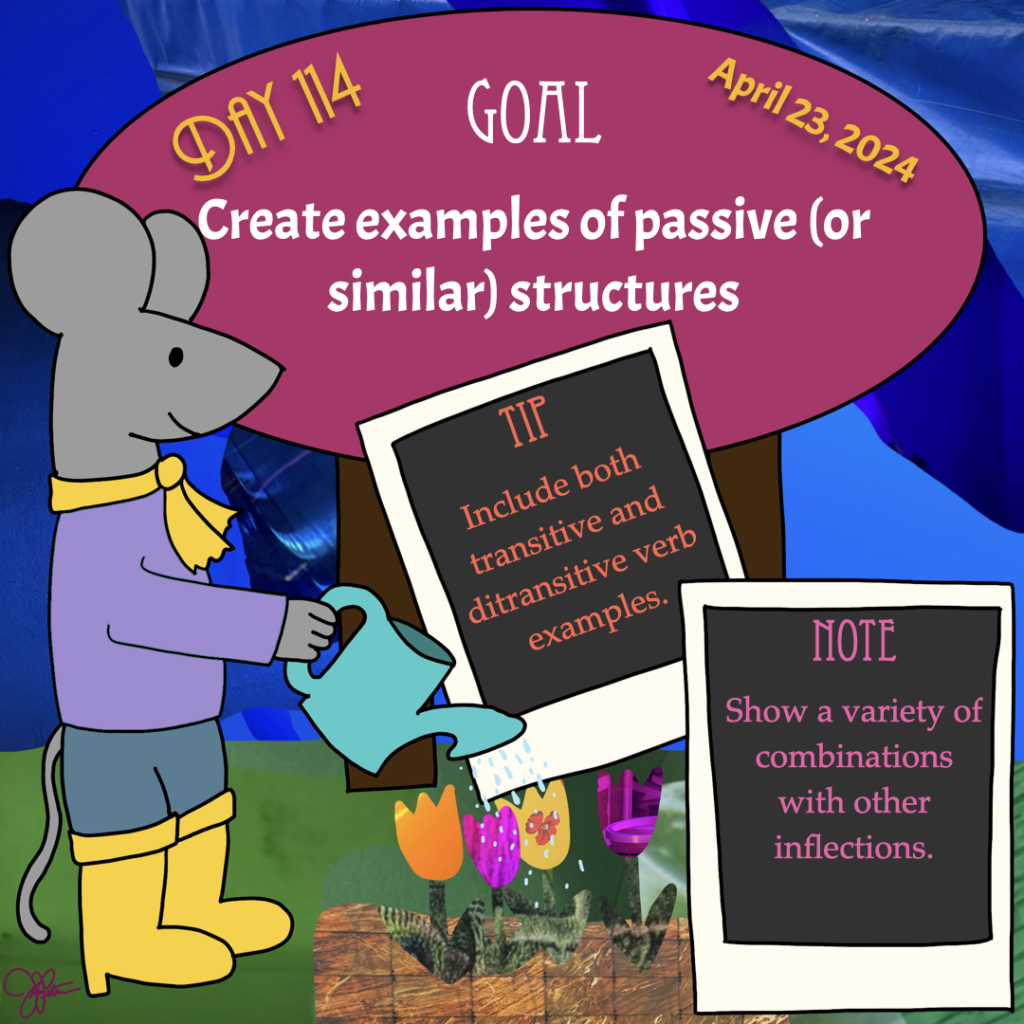
Goal: Create examples of passive (or similar) structures
Note: Show a variety of combinations with other inflections.
Tip: Include both transitive and ditransitive verb examples.
Work focus: Create/Make/List
Use today to create several example sentences to showcase your passive (or antipassive) strategy. It’s helpful to show these examples in active ~ passive pairs to show the difference in clause structure and verb inflections as you move from one type of clause to the other. If you don’t have a marked passive inflection/structure, you can still show examples to demonstrate how your language handles such situations.
If you have a marked passive inflection, create sentences to showcase a variety of combinations with other inflections to show the ordering (e.g. ordering of the passive inflection relative to T/A inflections, index markers, and/or negation). Also, include examples of transitive and ditransitive verbs. Ditransitive verbs can behave differently across languages, where some restrict which object can be “raised” into the subject position while others don’t.
For instance, if you have a sentence like “I handed Mozzie the money,” could you say both “The money was handed Mozzie” and “Mozzie was handed the money” in your language? (Note that English can have either object in the subject position, but “to Mozzie” is used in the former construction rather than a bare indirect object: “The money was handed to Mozzie”).
